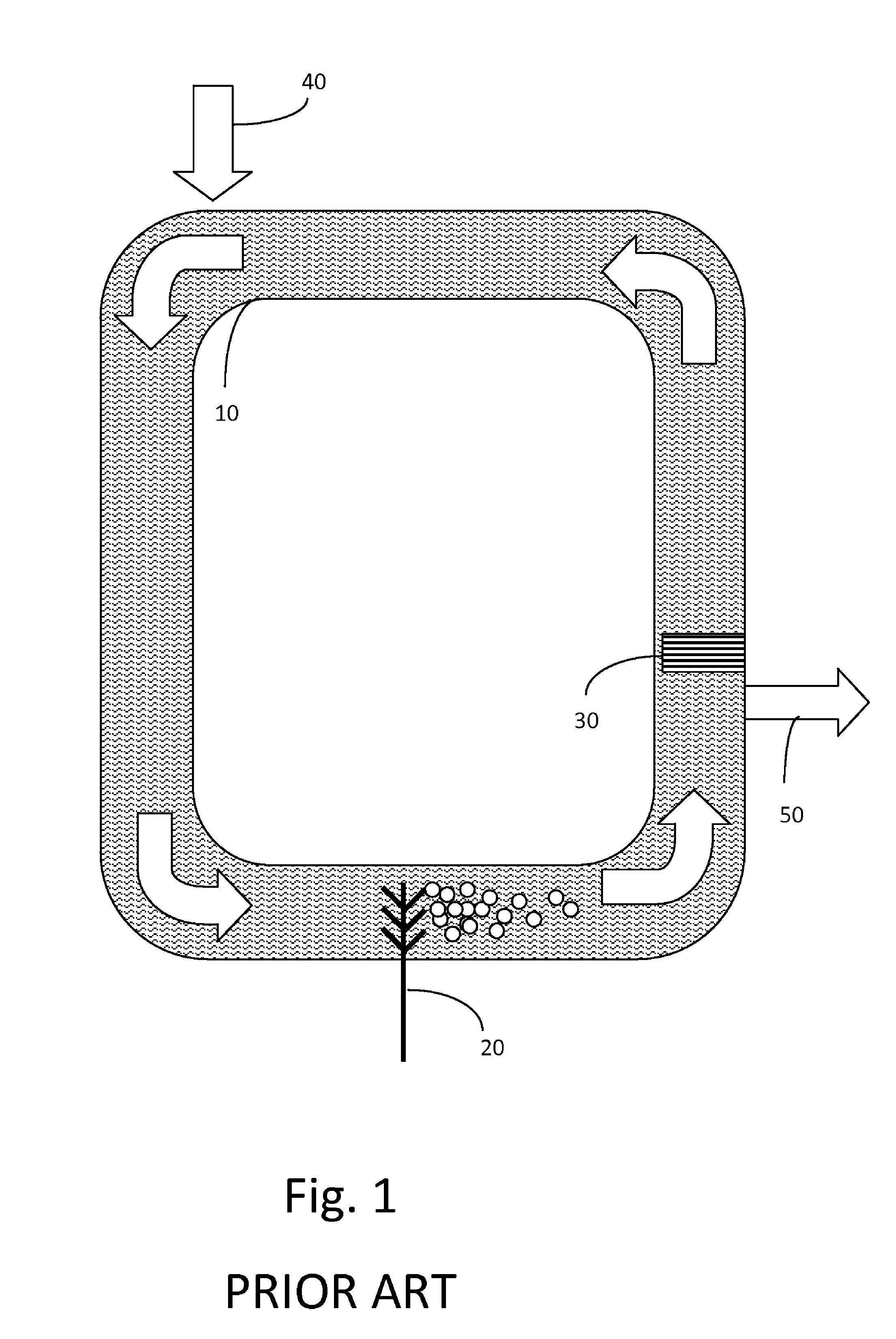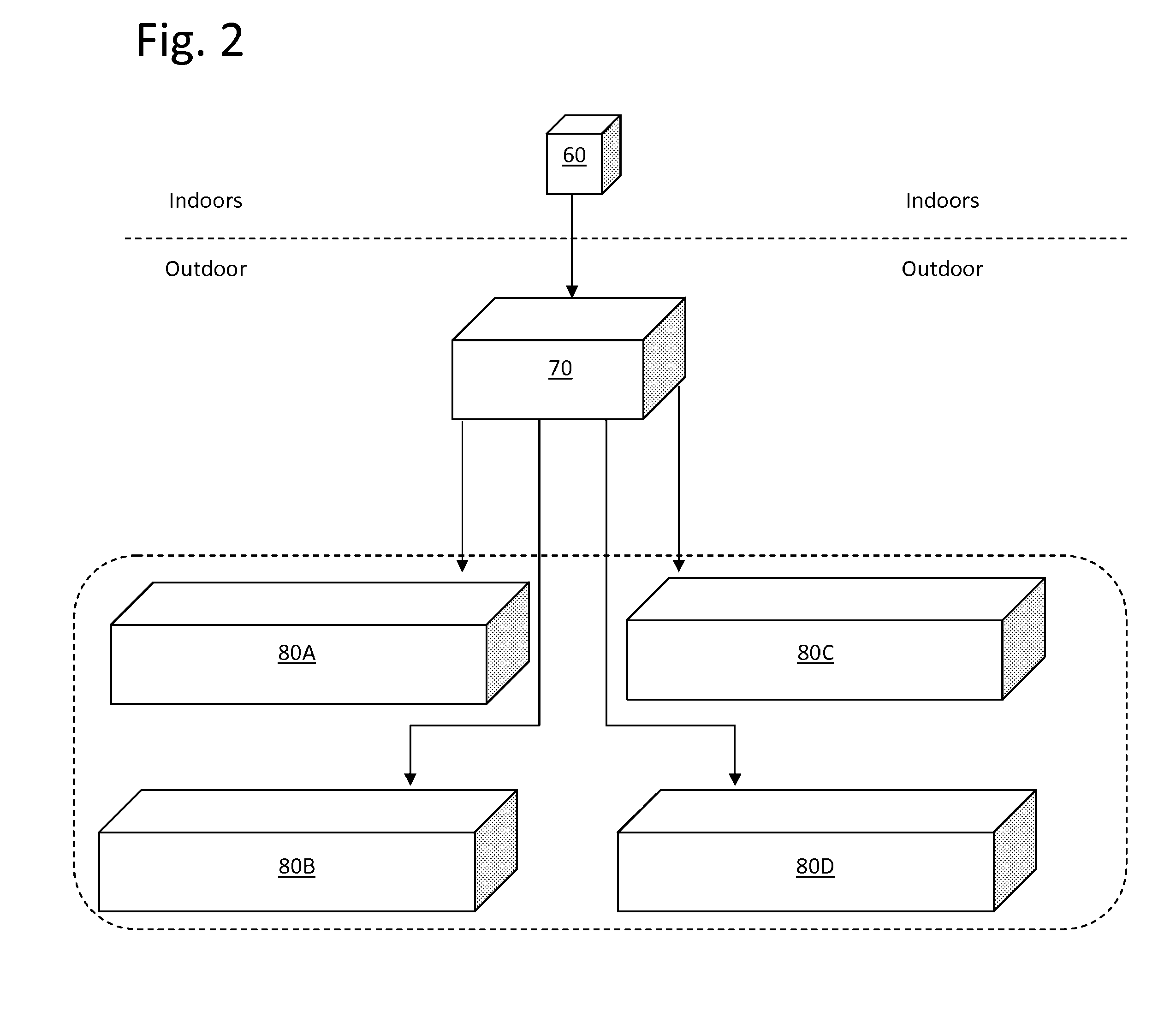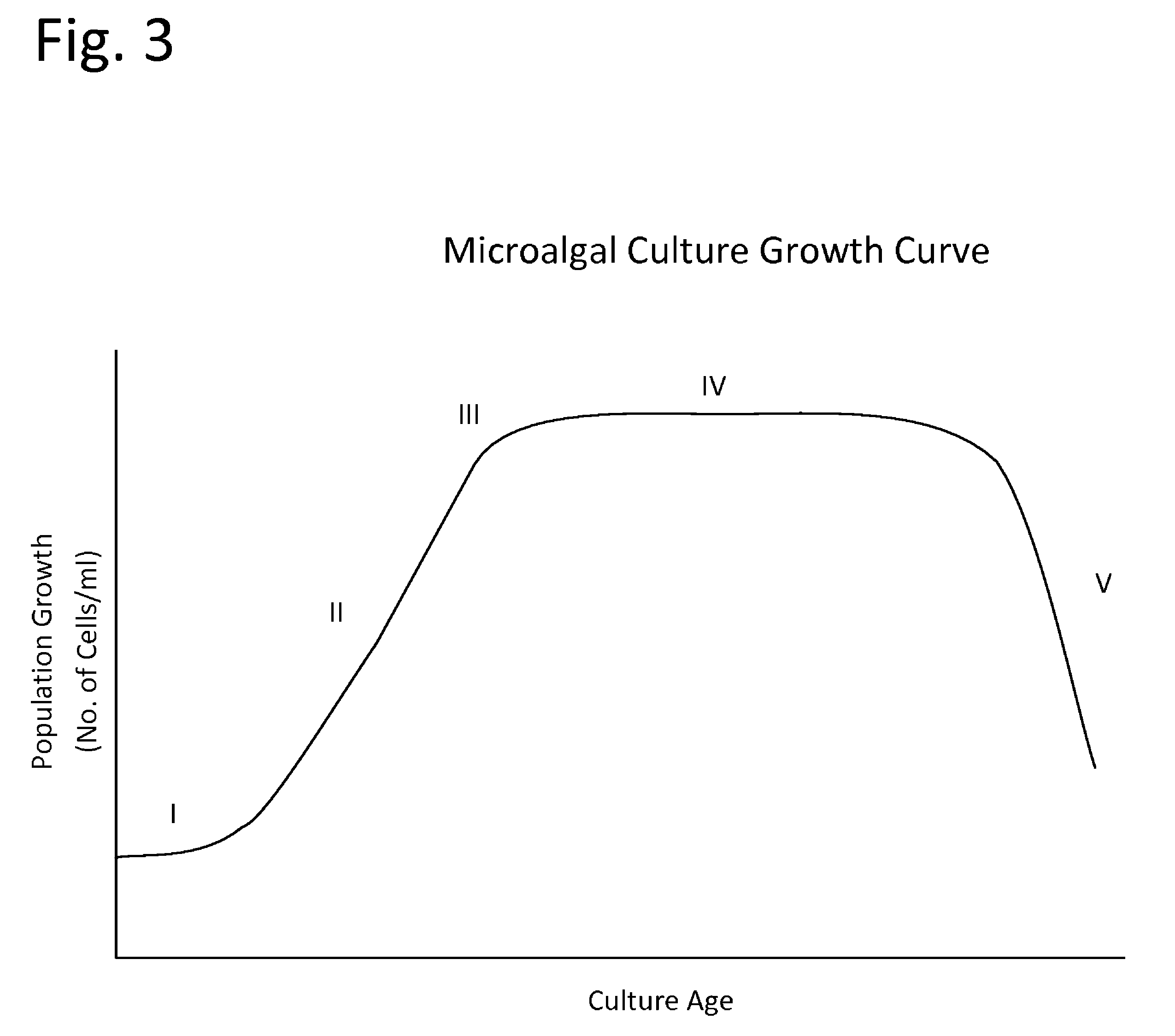Mass culture of microalgae for lipid production
a technology of lipid production and mass culture, which is applied in the field of lipid production from microalgae, can solve the problems of affecting the productivities of the open pond, requiring relatively little further engineering development, and little prospect of alternative designs to achieve consistently high productivities. , to achieve the effect of reducing heat absorbed and improving efficiency
- Summary
- Abstract
- Description
- Claims
- Application Information
AI Technical Summary
Benefits of technology
Problems solved by technology
Method used
Image
Examples
Embodiment Construction
A guiding principle throughout the design of this system is cost effectiveness. The equipment and supplies utilized are readily available from farm and commercial warehouses rather than from more costly scientific or laboratory sources or custom fabrication. In addition, many of the techniques and procedures employed represent a synthesized re-purposing of elements and components of existing procedures and processes. These basic guidelines of utilizing inexpensive, available components from a wide range of disciplines, and re-channeling their applications, results in practicality and cost effectiveness.
The unique system is based on two fundamental concepts that are not employed in other microalgal culturing systems:
1) Exploiting the High-Density Stationary Phase of Microalgal Growth.
The phenomenon of the algal bloom that occurs in nature creates microalgal outcroppings so dense that they can be seen from space. There are more than 100,000 different species of microalgae. While some ...
PUM
| Property | Measurement | Unit |
|---|---|---|
| depth | aaaaa | aaaaa |
| wavelengths | aaaaa | aaaaa |
| wavelengths | aaaaa | aaaaa |
Abstract
Description
Claims
Application Information
 Login to View More
Login to View More - R&D
- Intellectual Property
- Life Sciences
- Materials
- Tech Scout
- Unparalleled Data Quality
- Higher Quality Content
- 60% Fewer Hallucinations
Browse by: Latest US Patents, China's latest patents, Technical Efficacy Thesaurus, Application Domain, Technology Topic, Popular Technical Reports.
© 2025 PatSnap. All rights reserved.Legal|Privacy policy|Modern Slavery Act Transparency Statement|Sitemap|About US| Contact US: help@patsnap.com



